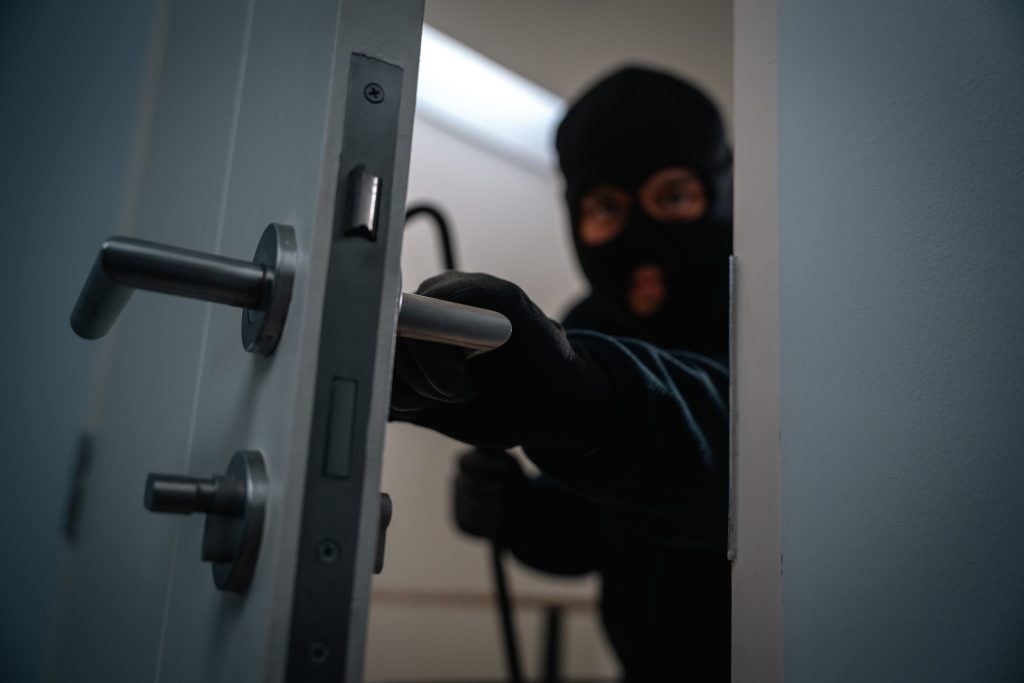
Your home should be your sanctuary, a place where you feel completely safe and secure. For the millions of people living alone, however, that sense of security can be fragile. Statistics and criminal behavior patterns reveal a sobering truth: residential units with a single occupant are often targeted for break-ins at a higher rate. This isn’t a coincidence; burglars are opportunistic and make calculated decisions based on risk and reward. Understanding why a home with a single occupant is more appealing to a criminal is the first step in empowering yourself to fight back and fortify your space against intrusion.
1. Highly Predictable Schedules
A single occupant typically has a more predictable routine than a household with multiple people. They leave for work at the same time, return around the same time, and run errands on a consistent schedule. For a burglar monitoring a potential target, this predictability is a gift, as it provides a clear and reliable window of time when the home will be empty. A family or a home with roommates has more erratic patterns of movement, making it riskier for a thief to guess when the coast is clear. The simple, consistent rhythm of a solo life can unfortunately make you an easier target.
2. Fewer Potential Witnesses Inside
The greatest risk for any burglar is being confronted or identified during the act. In a home with a single occupant, the odds of someone else being unexpectedly present in another room are zero. This dramatically lowers the risk for the intruder, allowing them to work with more confidence and less fear of being surprised by a spouse, child, or roommate. They know that if they have correctly timed the break-in, the entire home is theirs to navigate without interference. This makes the entire operation feel safer and more controlled from their perspective.
3. Less Apparent Occupancy
A home with several people naturally shows more signs of life. There might be multiple cars in the driveway, lights on in different rooms at various times, and more general activity. A residence with a single occupant, on the other hand, can appear quiet and still for long periods, especially when that person is at work or away. A single car that’s gone all day is a clear signal of an empty house, and fewer lights can make the home look unoccupied at night. These subtle cues are exactly what burglars look for when scouting a neighborhood.
4. Slower Emergency Response
If a break-in occurs while the resident is home, a single occupant is at a distinct disadvantage. There is no one else in the house to call for help, create a distraction, or provide backup. This isolation can delay the call to 911, giving the intruder more time to commit the crime and escape. Burglars are aware of this vulnerability and may perceive a single person as less of a physical threat. The knowledge that they are only dealing with one individual can embolden a criminal to take more risks.
5. The Perception of an ‘Easier’ Target
Criminals often operate on a set of dangerous stereotypes and assumptions. They may perceive a single occupant, particularly a woman or an elderly person, as being less likely or able to physically defend themselves. This makes the potential for confrontation seem less risky in their minds. While this assumption is often wrong, it’s a powerful factor in their target selection process. A home that they believe is occupied by a “softer” target is simply more appealing than one that might house multiple, more formidable residents.
6. A Reduction in Natural Deterrents
Multi-person households often come with built-in, unintentional deterrents. There might be a large dog belonging to one roommate, a messy teenager who leaves lights on, or the simple presence of more vehicles. A single occupant is less likely to have these layers of “life” that can make a burglar think twice. For example, a criminal might hesitate to break into a home where they hear a large dog barking, a sound less commonly associated with someone living completely alone. Every small deterrent adds up, and solo residences often have fewer of them.
7. Simplified Surveillance
Before attempting a break-in, a burglar will often watch a target to learn its patterns. It is far easier to monitor the routine of one person than it is to track the movements of an entire family. A single occupant has a straightforward schedule that can be mapped out after just a day or two of observation. A family’s schedule is a complex web of school runs, separate work schedules, and social activities that is much harder to predict. This ease of surveillance makes a single-dweller’s home a lower-effort, higher-certainty target.
8. Less Ambient Noise and Activity
A quiet home is an ideal environment for a burglar. In a house with a single occupant, there is naturally less ambient noise from televisions, conversations, or people moving around. This silence makes it easier for an intruder to hear if the resident is approaching and allows them to make more noise during the break-in without fear of being overheard. A bustling family home creates a soundscape that can mask the noise of a forced entry, making it a riskier proposition. The quiet nature of a solo home is an unfortunate advantage for those with criminal intent.
Turning Vulnerability into Strength
Living alone doesn’t mean you have to live in fear. Recognizing that a home with a single occupant can be a target is the first step toward proactive security. By consciously varying your routine, using timers for lights and radios, and investing in a quality security system, you can erase the signs that make you vulnerable. Fortifying your doors and windows and cultivating relationships with neighbors who can watch your property are also powerful steps. You can transform your home from an easy target into a formidable fortress.
If you live alone, what is the number one thing you do to feel safer at home? Share your security tips in the comments!
Read More:
8 Ways to Make Your Neighborhood Safer Without Spending a Fortune
The 7 Most Dangerous Places in Your Home That Are Accidentally Putting Your Family at Risk
The post 8 Reasons Why Break-Ins Happen Most Often in Units With a Single Occupant appeared first on Budget and the Bees.







